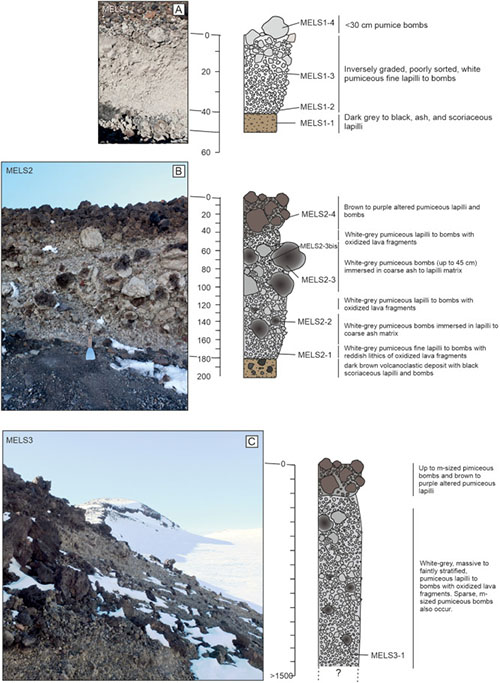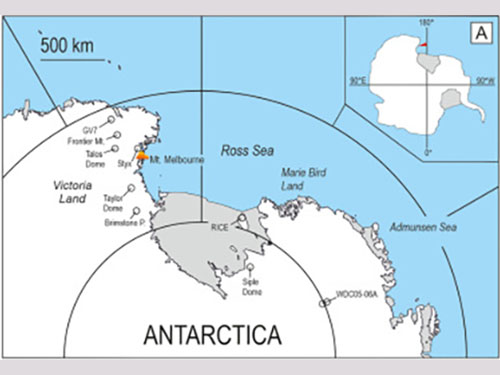Tephrostratigraphy of proximal pyroclastic sequences at Mount Melbourne (northern Victoria Land, Antarctica): Insights into the volcanic activity since the last glacial period

Del Carlo P., A. Di Roberto, G. Di Vincenzo, G. Re, P.G. Albert, M. Nazzari, V.C. Smith, A. Cannata.
Journal of Volcanology and Geothermal Research, 422, https://doi.org/10.1016/j.jvolgeores.2021.107457
Abstract
We report on the characterization of a thick sequence of pyroclastic deposits exposed on the summit area and flanks of Mount Melbourne volcano, in northern Victoria Land, Antarctica related to eruptions during the Late Glacial period. We provide a complete characterization of tephra deposits including mineralogy, single shard major- and trace-element glass compositions, and an 40Ar-39Ar age of feldspar crystals extracted from the deposit. The pyroclastic deposits are trachybasaltic to trachytic in composition and are interpreted to have resulted from four Strombolian/Vulcanian to sub-Plinian/Plinian eruptions. The younger and more intense sub-Plinian/Plinian eruption (our eruption 2) yielded an 40Ar-39Ar age of 13.5 ± 4.3 ka (±2σ). The study of Mount Melbourne proximal deposits provides significant new data for the reconstruction of the volcano eruptive history and a better assessment of the volcanic risk connected to a possible future eruption.
We also explore geochemical correlations between Mount Melbourne proximal deposits and distal tephra layers recognized in ice cores and blue ice fields of East Antarctica. A good geochemical match exists between the composition of products from the trachytic sub-Plinian/Plinian eruption 2 and some tephra layers from Talos Dome and shards in Siple Dome which is also compatible in age (c. 9.3 ka) with our 40Ar-39Ar age determination. Our new insights into the volcanic history of Mount Melbourne and the new high-quality electron microprobe and trace element composition data on its proximal products will help improve future correlations and synchronization of tephra archives in the region.



Devi effettuare l'accesso per postare un commento.